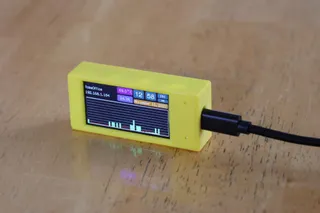Wall / backboard mount for a Raspberry Pi Zero in a Flirc case
Description
PDFThis package contains three designs (including all .stl, PRUSA Slicer, PRUSA MK3S g-code, and Fusion 360 source files) to mount a Raspberry Pi Zero in a Flirc case to a wall or backboard. These designs are for:
- Mounting on a pedestal (which in turn mounts on a wall or backboard) using magnets. The pedestal raises the Pi up in such a way that extra cable lengths can be wrapped around the pedestal in such a way as to reduce slack in the cable lengths
- Mounting on a pedestal using screws
- Mounting directly to the wall or backboard using screws
For all designs the base on which the Flirc case is mounted does not replace the existing base of the Flirc case, rather the existing bottom of the Flirc case is simply secured to top of the 3D printed model. This is to help ensure there are no issues with melting 3D print materials (such as PLA) if the Pi case gets hot.
IMPORTANT:
For all designs longer screws are required to replace the four screws that come with the Flirc case; four M2.5*10 work great for this.
For the first design, two 1.26 inch x 0.2 inch Neodymium Disc Countersunk Hole Magnets are used (example: https://www.amazon.ca/gp/product/B07T6XZF84 ). The first magnet is embedded in the print. The associated gcode file for this model has a filament colour change point at the required insert point to allow you to manually place the magnet into the print. The second magnet is screwed to the wall/backboard. The 3D printed solution with the Pi on it can then be easily snapped in and out of its wall / backboard mount.
Note: when placing the magnet into the print please take care to position its north/south side of the magnet to match the exposed north/south side of the magnet that will be placed on the wall/backboard. The two magnets need to be positioned to attracted (and not repel) each other.
Tags
Model origin
The author marked this model as their own original creation.




